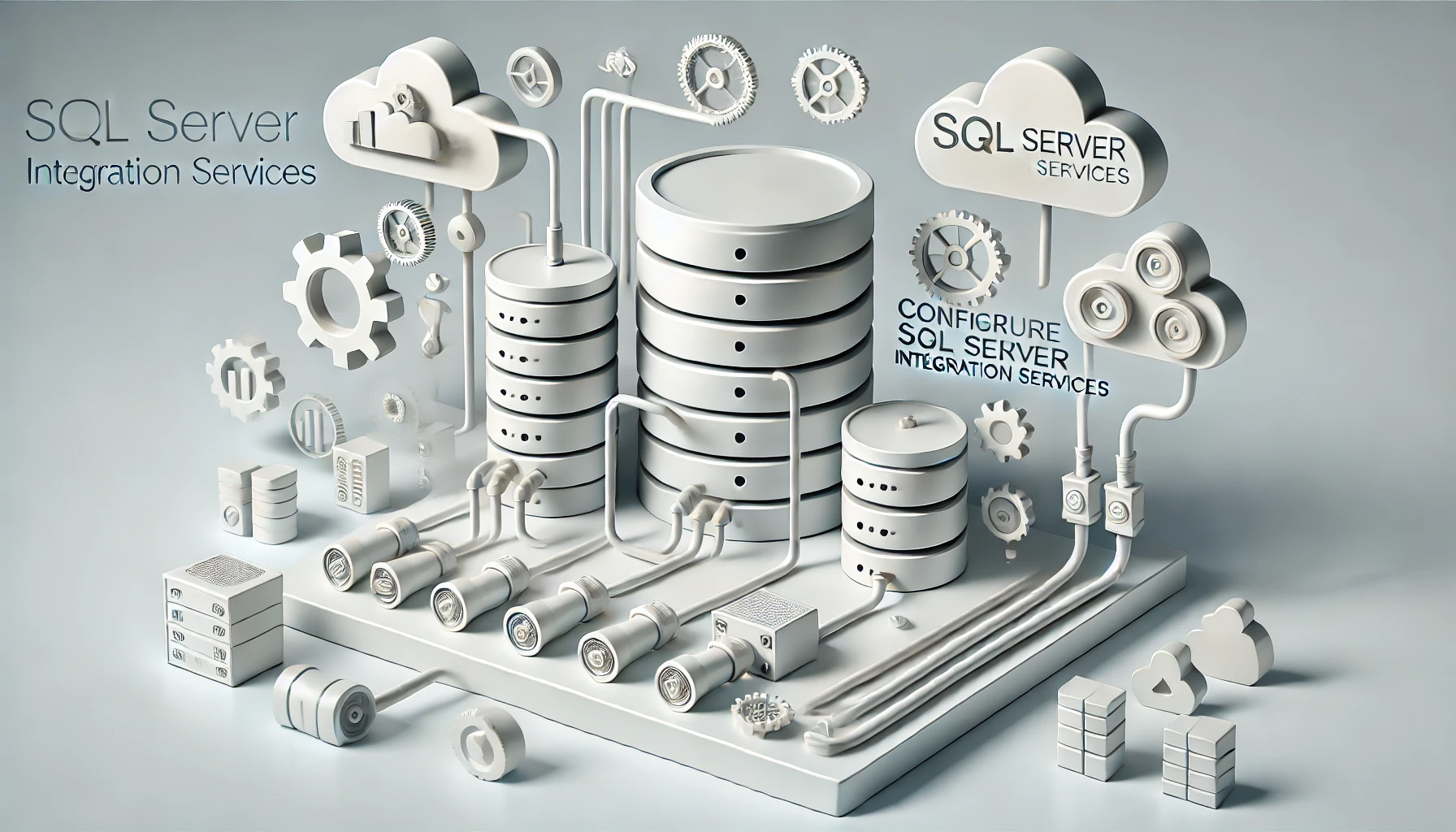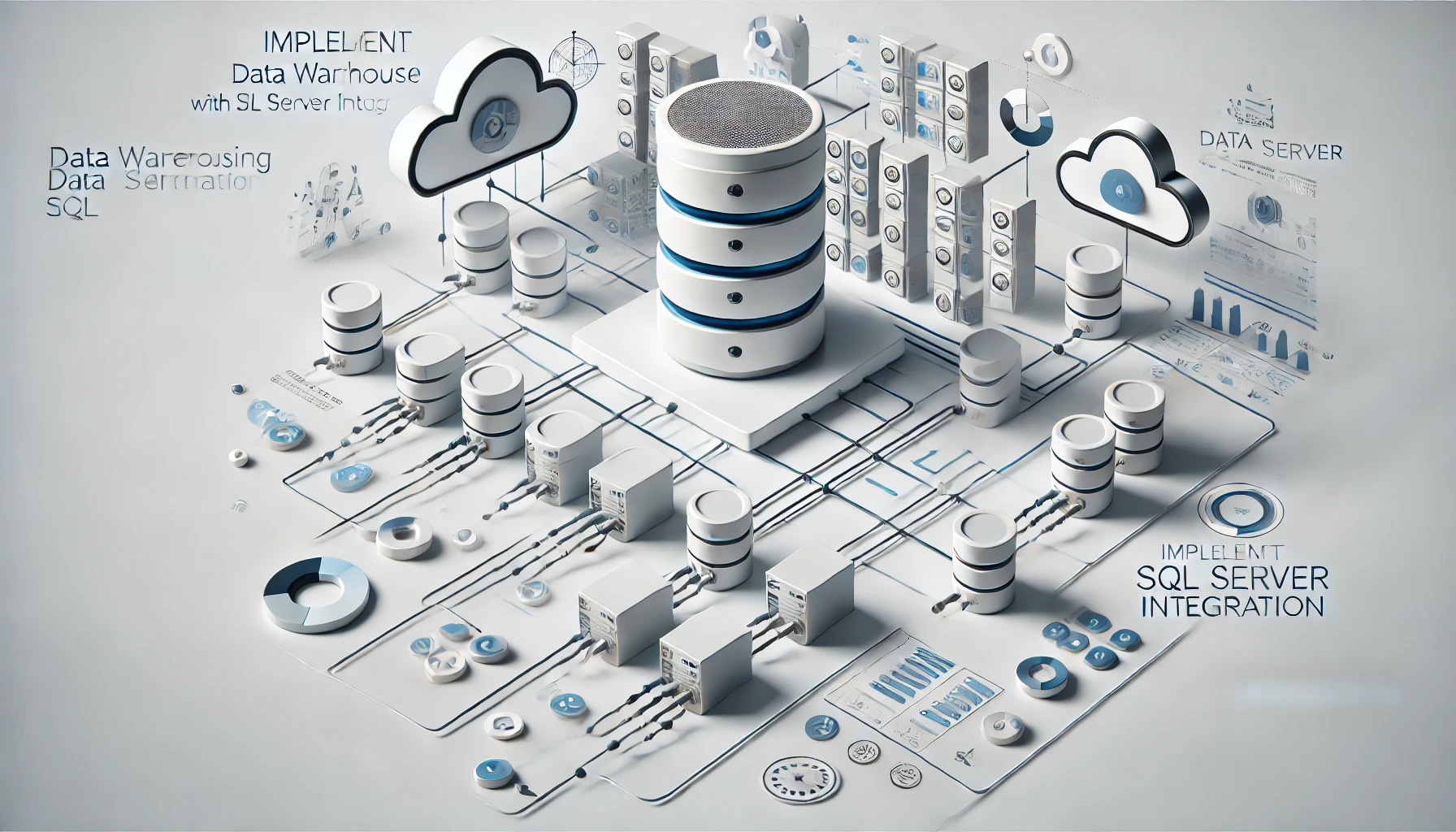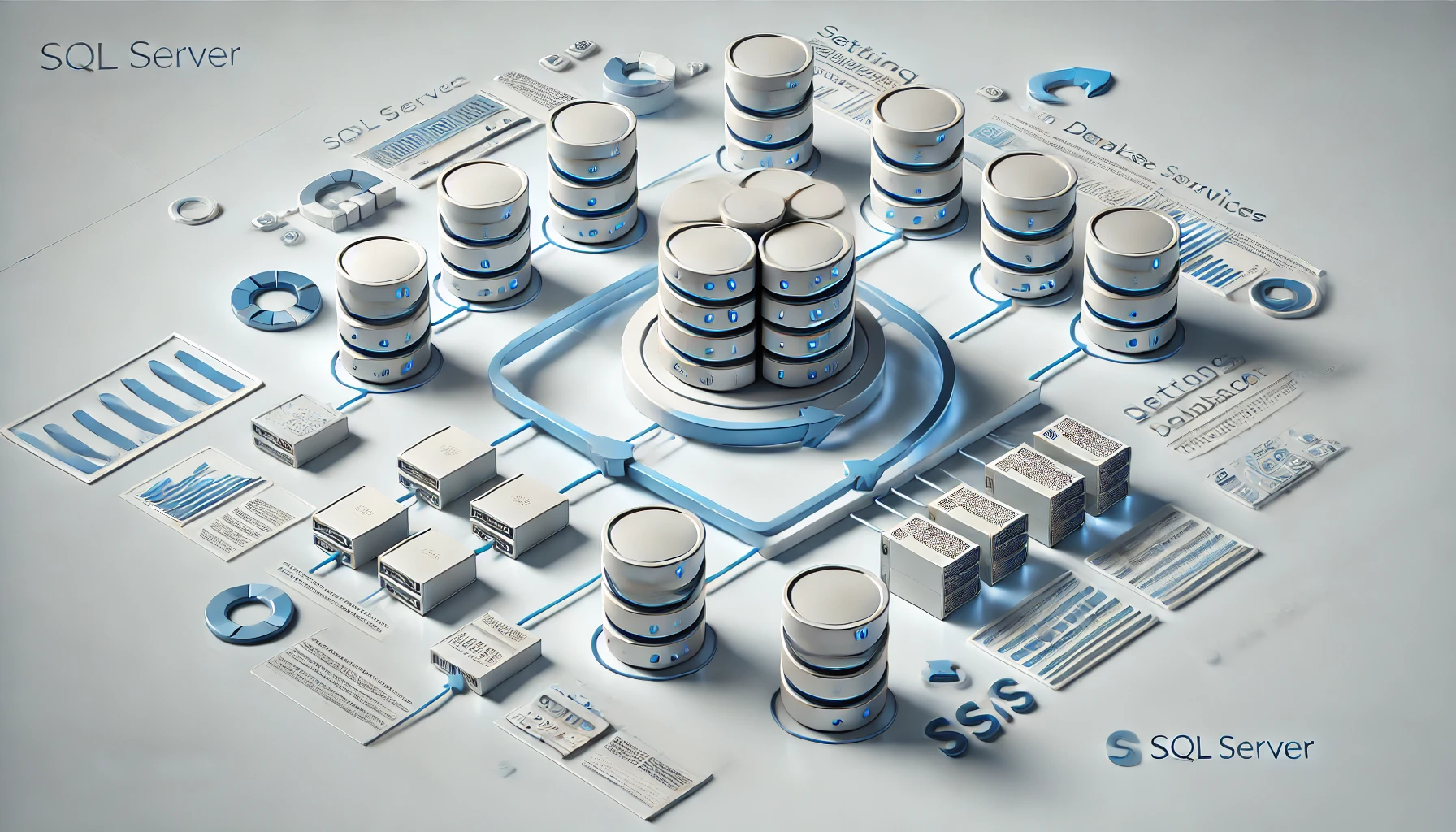When embarking on the task of migrating data with SQL Server Integration, you might stumble upon unexpected challenges that require a meticulous approach. From data profiling to executing the migration process, every step demands precision and foresight. As you delve into the intricacies of data mapping and quality validation, a well-structured plan becomes your compass in navigating the migration journey. But what happens when data discrepancies arise during the validation phase? The solution lies in…
Identify Data to Migrate
When planning to migrate data with SQL Server Integration, the initial crucial step is to accurately identify the specific data that needs to be moved. Data profiling plays a fundamental role in this process by allowing you to understand the structure, quality, and content of your data. By conducting data profiling, you can gain insights into the relationships between different data elements, identifying any inconsistencies or anomalies that may exist within the dataset.
Once data profiling is complete, the next step is data mapping. Data mapping involves creating a detailed plan that outlines how data will be transferred from the source to the destination. This process helps ensure that all necessary data is accounted for and that it is correctly mapped to the appropriate fields in the target database.
Additionally, before initiating the data migration process, it is essential to perform data cleansing and validation. Data cleansing involves correcting any errors or inconsistencies in the dataset, while data validation ensures that the migrated data meets the required quality standards. By adhering to these practices, you can enhance the accuracy and reliability of your data migration process.
Install SQL Server
To proceed with the data migration process using SQL Server Integration, the next step is installing SQL Server. Before beginning the installation process, it is crucial to ensure that you have taken a recent database backup to prevent any data loss during installation.
When installing SQL Server, it’s essential to consider the server requirements to ensure optimal performance. Make sure your server meets the specified hardware requirements, such as sufficient memory, processing power, and storage capacity. Additionally, check that the operating system version is compatible with the SQL Server version you intend to install.
Setup Integration Services
To set up Integration Services, you will need to begin by installing the necessary software on your system. Once the software is installed, the next step involves configuring data sources to establish connections for data migration. Lastly, you will design the data flow within Integration Services to facilitate the smooth transfer of data between different sources and destinations.
Install Necessary Software
Begin by ensuring you have the necessary software to set up Integration Services. Before installing SQL Server Integration Services (SSIS), it’s crucial to check the system requirements. Ensure that your system meets the specifications for running SSIS effectively. To install SSIS, you first need to have SQL Server Data Tools (SSDT) installed. SSDT is a development tool that enables you to design and deploy SSIS packages. You can install SSDT either as a standalone tool or as part of the SQL Server installation. Once SSDT is installed, you can proceed with setting up Integration Services by selecting it during the SQL Server installation process. This will include choosing the Integration Services feature to be installed. Following the installation, you can access Integration Services through SQL Server Management Studio (SSMS) and begin configuring data sources for your migration process. By following these steps, you can ensure a smooth setup of Integration Services for your data migration needs.
Configure Data Sources
For setting up Integration Services and configuring data sources, you will need to navigate to the SQL Server Management Studio (SSMS) after installing SQL Server Data Tools (SSDT). In SSMS, you can set up data sources for your migration tasks. Data validation is crucial during this stage to ensure the accuracy and integrity of the data being transferred. You will need to define the source mapping, which involves specifying the relationship between the source data and the destination data. This step is essential for correctly transferring information between different databases or systems.
When configuring data sources, make sure to verify the connectivity settings, such as server name, authentication method, and database name. Additionally, validate that the source data meets the required format and standards for successful migration. Proper source mapping guarantees that the data is correctly matched and transferred to the designated locations. Take the time to double-check these configurations to avoid any errors during the data migration process.
Design Data Flow
When designing the data flow within Integration Services, you will craft the path through which your data will move from source to destination. Data transformation plays a crucial role in this process, allowing you to manipulate, convert, and enrich the data as it flows through the pipeline. To ensure optimal performance, consider implementing performance optimization techniques such as using efficient data types, minimizing unnecessary data conversions, and utilizing parallel processing where applicable.
As you set up Integration Services, carefully map out each step of the data flow, including data sources, transformations, and destinations. Identify any potential bottlenecks or areas where performance may be impacted. By designing a streamlined data flow that leverages the capabilities of Integration Services effectively, you can enhance the efficiency and reliability of your data migration process.
Remember to test your data flow thoroughly to validate that data transformation and performance optimization strategies are effectively implemented. Fine-tuning the design based on testing results will help you achieve a successful data migration with SQL Server Integration.
Design ETL Process
As you embark on the task of designing an ETL process for migrating data with SQL Server Integration, it is crucial to ensure a systematic and well-thought-out approach. To adhere to ETL best practices, start by clearly defining the extraction, transformation, and loading stages. Identify the data sources and destinations, understanding their structures and formats before proceeding. Utilize efficient data transformation techniques such as data cleansing, deduplication, and normalization to ensure the accuracy and consistency of the migrated data.
Consider using staging tables to facilitate complex transformations and minimize the impact on the source systems. Document each step meticulously, including error handling procedures to maintain data integrity throughout the process. Remember to optimize the ETL workflow for performance, taking into account factors like data volume, network latency, and hardware resources. By following these best practices and employing effective data transformation techniques, you can design a robust ETL process that streamlines the migration of data with SQL Server Integration.
Test Migration Process
To ensure the successful implementation of the migration process, thorough testing is essential. Start by validating the data mapping, ensuring that data from the source aligns correctly with the target database. This step is crucial in guaranteeing that all information is accurately transferred during the migration.
Once the data mapping is confirmed, proceed with the migration validation. This involves running test migrations using a subset of data to verify that the process functions as intended. During this stage, pay close attention to data integrity, accuracy, and completeness.
Perform various tests to simulate different scenarios, including testing for edge cases and handling of errors. Document any issues encountered and make necessary adjustments to the migration process. Regularly revisit the testing phase to ensure that all aspects are thoroughly validated before moving to the implementation stage. By diligently testing the migration process, you can mitigate risks and ensure a smooth transition of data to the new system.
Implement Data Migration
As you begin to implement data migration, the first step is to meticulously plan your migration strategy. This involves defining the scope, timeline, and resources needed for a successful migration process. Once the strategy is in place, the next critical phase is to validate the accuracy of the data being migrated to ensure data integrity is maintained throughout the process.
Plan Migration Strategy
Migration of data is a crucial step in the process of transitioning to a new system or platform. To plan your migration strategy effectively, begin by conducting thorough data mapping to understand the structure and relationships of your data. This step will help you identify potential challenges and dependencies that need to be addressed during the migration process.
Next, perform data validation to ensure the accuracy and integrity of the data being migrated. This involves verifying that the data meets quality standards and is compatible with the new system.
Develop a migration timeline that outlines key milestones and deadlines to keep the process on track. Conduct a risk assessment to identify potential risks that could impact the migration and develop mitigation strategies to address them proactively.
Validate Data Accuracy
Begin by ensuring the accuracy of your data as you progress into the implementation phase of data migration. Data validation techniques play a crucial role in verifying the integrity and correctness of the migrated data. One of the accuracy validation methods is performing field-level validation, which involves checking that each data field meets the specified format and constraints. Additionally, cross-field validation ensures that the relationship between different fields is consistent and accurate. Implementing data profiling is another essential technique where you analyze the data to identify any anomalies or inconsistencies before migration.
Execute Migration Process
To proceed with the execution of the migration process, you will now delve into the practical implementation of data migration. Begin by initiating the transfer of validated data from the source database to the destination database using SQL Server Integration Services. During this crucial phase, ensure that data validation rules are strictly followed to maintain accuracy and integrity. Implement robust error handling mechanisms to address any issues that may arise during the migration process, such as data format discrepancies or connectivity issues. Monitor the migration progress closely, checking for any anomalies or inconsistencies that could affect the quality of the transferred data. By meticulously executing the migration process with a focus on data validation and error handling, you can mitigate risks and ensure a successful data transfer from the source to the destination database.
Frequently Asked Questions
Can I Migrate Data Between Different Versions of SQL Server?
You can migrate data between different SQL Server versions. Cross version migrations require compatibility testing to ensure a smooth transition. It’s crucial to validate data integrity and functionality when moving data across SQL Server versions.
How Can I Handle Data Transformation During Migration?
To handle data transformation during migration, focus on data mapping and schema changes. Ensure compatibility between source and target databases. Use SQL Server Integration Services for efficient data migration. Test thoroughly to validate accuracy.
Is It Possible to Schedule Data Migration Tasks?
Yes, you can schedule data migration tasks. Explore automation options within your system for efficient processing. Ensure to consider maintenance implications for scheduled tasks to run smoothly and consistently without disrupting ongoing operations.
What Are Common Challenges Faced During Data Migration?
When migrating data, you may encounter intricate data mapping challenges, akin to untangling a web. Implementing robust performance tuning strategies is crucial for optimizing efficiency and ensuring a seamless transition of information between systems.
How Can I Ensure Data Integrity After Migration?
To ensure data integrity after migration, focus on data validation and error handling. Implement thorough validation checks to verify data accuracy. Develop robust error handling mechanisms to address any discrepancies promptly, ensuring a smooth migration process.



